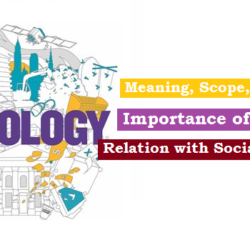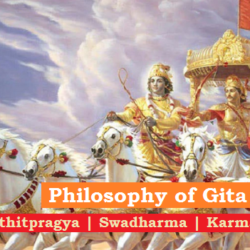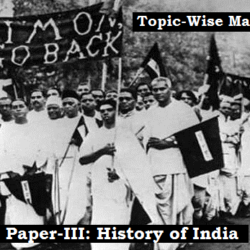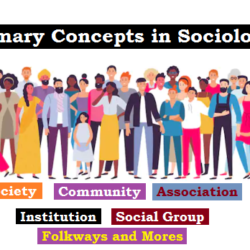Quiz-summary
0 of 70 questions completed
Questions:
- 1
- 2
- 3
- 4
- 5
- 6
- 7
- 8
- 9
- 10
- 11
- 12
- 13
- 14
- 15
- 16
- 17
- 18
- 19
- 20
- 21
- 22
- 23
- 24
- 25
- 26
- 27
- 28
- 29
- 30
- 31
- 32
- 33
- 34
- 35
- 36
- 37
- 38
- 39
- 40
- 41
- 42
- 43
- 44
- 45
- 46
- 47
- 48
- 49
- 50
- 51
- 52
- 53
- 54
- 55
- 56
- 57
- 58
- 59
- 60
- 61
- 62
- 63
- 64
- 65
- 66
- 67
- 68
- 69
- 70
Information
Please fill your name and email id to start the Quiz.
You have already completed the quiz before. Hence you can not start it again.
Quiz is loading...
You must sign in or sign up to start the quiz.
You have to finish following quiz, to start this quiz:
Results
0 of 70 questions answered correctly
Your time:
Time has elapsed
You have reached 0 of 0 points, (0)
Categories
- NCERT 0%
Well done! Keep practicing.
To see yourself in the leader board, click on ‘Send’ then ‘Show leaderboard’.
| Pos. | Name | Entered on | Points | Result |
|---|---|---|---|---|
| Table is loading | ||||
| No data available | ||||
- 1
- 2
- 3
- 4
- 5
- 6
- 7
- 8
- 9
- 10
- 11
- 12
- 13
- 14
- 15
- 16
- 17
- 18
- 19
- 20
- 21
- 22
- 23
- 24
- 25
- 26
- 27
- 28
- 29
- 30
- 31
- 32
- 33
- 34
- 35
- 36
- 37
- 38
- 39
- 40
- 41
- 42
- 43
- 44
- 45
- 46
- 47
- 48
- 49
- 50
- 51
- 52
- 53
- 54
- 55
- 56
- 57
- 58
- 59
- 60
- 61
- 62
- 63
- 64
- 65
- 66
- 67
- 68
- 69
- 70
- Answered
- Review
- Question 1 of 70
1. Question
Category: NCERTWhich of the following items has not been found in the Harappan graves?
CorrectIron hand axe
IncorrectIron hand axe
- Question 2 of 70
2. Question
Category: NCERTHarappa is located on the banks of which river?
CorrectRavi
IncorrectRavi
- Question 3 of 70
3. Question
Category: NCERTThe ‘Great Bath’ was found in which town of the Indus Valley Civilisation?
CorrectMohenjodaro
IncorrectMohenjodaro
- Question 4 of 70
4. Question
Category: NCERTWhich town in Indus Valley Civilisation had no Citadel?
CorrectChanhudaro
IncorrectChanhudaro
- Question 5 of 70
5. Question
Category: NCERTWhat was the main feature of the Harappa Civilisation?
CorrectTown planning
IncorrectTown planning
- Question 6 of 70
6. Question
Category: NCERTWhere were large granaries found?
CorrectHarappa and Mohenjodaro
IncorrectHarappa and Mohenjodaro
- Question 7 of 70
7. Question
Category: NCERTWhich of the following statements is incorrect regarding the weights used during the Harappan period?
CorrectThe higher denominations of weights were binary in multiples of two.
IncorrectThe higher denominations of weights were binary in multiples of two.
- Question 8 of 70
8. Question
Category: NCERTWhich of the following is not one of the features of Harappan writing?
CorrectIt has been deciphered by James Prinsep.
IncorrectIt has been deciphered by James Prinsep.
- Question 9 of 70
9. Question
Category: NCERTWhich two strategies are adopted by the archaeologists to identify social differences among the Harappans?
(i) Study of burials (ii) Study of script (iii) Study of trade and commerce (iv) Study of artifacts Choose the correct option.CorrectBoth ‘i’ and ‘iv’
IncorrectBoth ‘i’ and ‘iv’
- Question 10 of 70
10. Question
Category: NCERTWhich of the following metal was NOT known to the Harappans?
CorrectIron
IncorrectIron
- Question 11 of 70
11. Question
Category: NCERTConsider the following statements regarding the features of the Harappan settlements.
(i) The Harappan settlements were often small.
(ii) They had no large buildings
(iii) Harappan settlements had a well-planned network of roads.
(iv) Drainage system was the key feature of the Harappan settlements.
Which of the following statements is/are correct?CorrectIII and IV
IncorrectIII and IV
- Question 12 of 70
12. Question
Category: NCERTWhat are big rocks kept on the burial in central and south India called?
CorrectMegaliths
IncorrectMegaliths
- Question 13 of 70
13. Question
Category: NCERTWho was Dhamma Mahamatta?
CorrectSpecial officers appointed by Ashoka to spread the message of dhamma
IncorrectSpecial officers appointed by Ashoka to spread the message of dhamma
- Question 14 of 70
14. Question
Category: NCERTWhy is the sixth century BCE often considered a major turning point in Indian history?
CorrectEmergence of states, cities, and towns; Use of iron
IncorrectEmergence of states, cities, and towns; Use of iron
- Question 15 of 70
15. Question
Category: NCERTWho composed the Prayag Prashasti in praise of Samudragupta?
CorrectHarisena
IncorrectHarisena
- Question 16 of 70
16. Question
Category: NCERTWhich of the following is not one of the main features of Ashoka’s dhamma?
CorrectConsider your religion superior to the other religions.
IncorrectConsider your religion superior to the other religions.
- Question 17 of 70
17. Question
Category: NCERTWhat were the guilds of the merchants and craftsmen called?
CorrectShrenis
IncorrectShrenis
- Question 18 of 70
18. Question
Category: NCERTWhat is James Prinsep’s contribution in the development of the Indian epigraphy?
CorrectHe deciphered the Brahmi script used in most of the Ashokan inscriptions.
IncorrectHe deciphered the Brahmi script used in most of the Ashokan inscriptions.
- Question 19 of 70
19. Question
Category: NCERTVentures of which of the following traders were risky but highly profitable?
CorrectSeafarers
IncorrectSeafarers
- Question 20 of 70
20. Question
Category: NCERTWho issued the first coins bearing the names of rulers?
CorrectIndo-Greeks
IncorrectIndo-Greeks
- Question 21 of 70
21. Question
Category: NCERTAshoka is mentioned by which titles in his inscriptions?
CorrectDevanampiya, Piyadassi
IncorrectDevanampiya, Piyadassi
- Question 22 of 70
22. Question
Category: NCERTName the languages in which the Ashokan inscriptions were written.
CorrectPrakrit, Aramaic, and Greek
IncorrectPrakrit, Aramaic, and Greek
- Question 23 of 70
23. Question
Category: NCERTConsider the following statements regarding Magadha.
(i) Magadha was the most powerful mahajanapada.
(ii) Initially Pataliputra was the capital of Magadha and later it was shifted to Rajagriha.
(iii) Elephants were found in abundance in the forests of Magadha.
Which of the following statement(s) is/are correct?CorrectI and III
IncorrectI and III
- Question 24 of 70
24. Question
Category: NCERTIdentify the best reason for considering King Ashoka as ‘Devanampiya’ and ‘Piyadassi’ by his subjects.
CorrectHe did wellbeing of society through Dhamma.
IncorrectHe did wellbeing of society through Dhamma.
- Question 25 of 70
25. Question
Category: NCERTWhich one of the following statements was not a justified reason for Magadha being a powerful mahajana pada?
CorrectPataliputra, the capital of Magadha, was fortified.
IncorrectPataliputra, the capital of Magadha, was fortified.
- Question 26 of 70
26. Question
Category: NCERTGiven below are two statements, one labelled as Assertion (A) and the other labelled as Reason (R):
Assertion (A): There are limits to what epigraphy can reveal.
Reason (R): It is not always easy to be sure about the exact meaning of the words used in inscriptions.CorrectBoth (A) and (R) are correct and (R) is the correct explanation of (A).
IncorrectBoth (A) and (R) are correct and (R) is the correct explanation of (A).
- Question 27 of 70
27. Question
Category: NCERTThe earliest inscriptions were written on which material?
CorrectStones
IncorrectStones
- Question 28 of 70
28. Question
Category: NCERTWhich of the following was one of the occupations of Kshatriyas?
CorrectPerform sacrifices and give gifts
IncorrectPerform sacrifices and give gifts
- Question 29 of 70
29. Question
Category: NCERTWhich of the following statements is incorrect about the duties as laid down in Manusmriti for the Chandalas?
CorrectThey were supposed to wear old clothes of the villagers and ornaments made from shells.
IncorrectThey were supposed to wear old clothes of the villagers and ornaments made from shells.
- Question 30 of 70
30. Question
Category: NCERTWhich of the following strategies were evolved by Brahmanas to enforce the norms of Varna order from c. 600 BCE to 600 CE?
CorrectAll of these.
IncorrectAll of these.
- Question 31 of 70
31. Question
Category: NCERTWhich of the following statements is correct about the importance of gender differences in the early societies from c. 600 BCE to 600 CE?
(i) Societies were patriliny in nature.
(ii) Women were allowed to give land grants.
(iii) Sons were considered important for the continuity of the family.CorrectBoth ‘i’ and ‘iii’
IncorrectBoth ‘i’ and ‘iii’
- Question 32 of 70
32. Question
Category: NCERTIn which type of marriage does a woman have several husbands?
CorrectPolyandry
IncorrectPolyandry
- Question 33 of 70
33. Question
Category: NCERTShakas who came from Central Asia were regarded by the Brahmanas as
CorrectMlechchhas
IncorrectMlechchhas
- Question 34 of 70
34. Question
Category: NCERTWhich of the following statements is correct about the classification of people in terms of ‘gotra’ under Brahmanical practice around 1000 BCE onwards?
CorrectAll of these.
IncorrectAll of these.
- Question 35 of 70
35. Question
Category: NCERTThe original story of Mahabharata was composed by
CorrectSutas
IncorrectSutas
- Question 36 of 70
36. Question
Category: NCERTWhat was the object of the team of V.S. Sukthankar?
CorrectPrepare critical edition of Mahabharata
IncorrectPrepare critical edition of Mahabharata
- Question 37 of 70
37. Question
Category: NCERTGiven below are two statements, one labelled as Assertion (A) and the other labelled as Reason (R):
Assertion (A): Women were expected to give up their father’s gotra and take up their husband’s gotra after marriage.
Reason (R): Women who married Satavahana rulers retained their father’s gotras instead of adopting names derived from their husband’s gotra name.CorrectBoth (A) and (R) are correct and (R) is not the correct explanation of (A).
IncorrectBoth (A) and (R) are correct and (R) is not the correct explanation of (A).
- Question 38 of 70
38. Question
Category: NCERTConsider the following statements regarding Jatis and social mobility.
(i) Jatis like varna was based on birth.
(ii) Just like varnas the number of jatis was fixed.
(iii) Jatis with different occupations sometimes organised into shrines or guilds.
Which of the statement(s) above is/are correct?Correcti only
Incorrecti only
- Question 39 of 70
39. Question
Category: NCERTWhich of the following statements is not correct regarding the duties of chandalas?
CorrectThey could walk about in villages and cities only at night.
IncorrectThey could walk about in villages and cities only at night.
- Question 40 of 70
40. Question
Category: NCERTConsider the following statements regarding gendered access to the property.
(i) Women had no right to the paternal estate.
(ii) Paternal estate was divided equally amongst sons after the death of the parents.
(iii) Stridhana could be inherited by the children and husband of the woman.
Which of the statement(s) above is/are correct?Correcti and ii
Incorrecti and ii
- Question 41 of 70
41. Question
Category: NCERTWhere did Buddha attain enlightenment?
CorrectBodh Gaya
IncorrectBodh Gaya
- Question 42 of 70
42. Question
Category: NCERTWhat was the name of the gana to which Buddha belonged to?
CorrectSakya
IncorrectSakya
- Question 43 of 70
43. Question
Category: NCERTWhat is the meaning of ‘Three Baskets’?
CorrectTipitaka
IncorrectTipitaka
- Question 44 of 70
44. Question
Category: NCERTThe Sangha was an association of whom?
CorrectBhikkus
IncorrectBhikkus
- Question 45 of 70
45. Question
Category: NCERTAccording to which Buddhist text Asoka distributed portions of the Buddha’s relics to every important town and ordered the construction of stupas over them?
CorrectAshokavadana
IncorrectAshokavadana
- Question 46 of 70
46. Question
Category: NCERTWhat does the symbol of ‘empty seat’ symbolise?
CorrectMeditation of the Buddha
IncorrectMeditation of the Buddha
- Question 47 of 70
47. Question
Category: NCERTWhich of the following is the most important idea in Jainism?
CorrectEntire world is animated
IncorrectEntire world is animated
- Question 48 of 70
48. Question
Category: NCERTWho provided money for the preservation of the Sanchi Stupa?
CorrectBegums of Bhopal
IncorrectBegums of Bhopal
- Question 49 of 70
49. Question
Category: NCERTWhat was the balcony-like structure in a stupa called?
CorrectHarmika
IncorrectHarmika
- Question 50 of 70
50. Question
Category: NCERTWhich of the following statements is incorrect regarding the lively discussions and debates in the Buddhist texts?
CorrectIn these debates the kings tried to convince one another as well as laypersons about the validity of their philosophy or the way they understood the world.
IncorrectIn these debates the kings tried to convince one another as well as laypersons about the validity of their philosophy or the way they understood the world.
- Question 51 of 70
51. Question
Category: NCERTConsider the following statements regarding Sangha.
(i) Mahapajapati Gotami persuaded Buddha to allow women into the sangha.
(ii) Many women who entered the sangha became teachers of Dhamma and went on to become theris.
(iii) Once within the sangha, all were regarded as equal.
Which of the following statements is/are correct?CorrectII and III
IncorrectII and III
- Question 52 of 70
52. Question
Category: NCERTMatch the following.
(i) Lumbini (a) Buddha attained Nibbana
(ii) Kusinagara (b) Buddha delivered his first sermon
(iii) Sarnath (c) Buddha was born
(iv) Bodh Gaya (d) Buddha attained enlightenment
Choose the correct optionCorrecti – c, ii – a, iii – b, iv – d
Incorrecti – c, ii – a, iii – b, iv – d
- Question 53 of 70
53. Question
Category: NCERTConsider the following statements regarding the structure of the stupa.
(i) Harmika is a balcony-like structure that represented the abode of gods.
(ii) A mast called the anda arose from the harmika.
(iii) A yashti was often surmounted by a chhatri or umbrella.
(iv) Yashti arose from the harmika.
Which of the following statements is/are correct?CorrectI, III and IV
IncorrectI, III and IV
- Question 54 of 70
54. Question
Category: NCERTGiven below are two statements, one labelled as Assertion (A) and the other labelled as Reason (R):
Assertion (A): The mid-first millennium BCE saw the emergence of new religions in India.
Reason (R): People began speculating on the significance of the sacrificial tradition and authority of the Vedas.CorrectBoth (A) and (R) are correct and (R) is the correct explanation of (A).
IncorrectBoth (A) and (R) are correct and (R) is the correct explanation of (A).
- Question 55 of 70
55. Question
Category: NCERTMatch the following.
(i) Metta (a) soulless
(ii) Karuna (b) fellow feeling
(iii) Anatta (c) sorrow
(iv) Dukkha (d) compassion
Choose the correct optionCorrecti – b, ii – d, iii – a, iv – c
Incorrecti – b, ii – d, iii – a, iv – c
- Question 56 of 70
56. Question
Category: NCERTWhich Portuguese writer provided a detailed account of trade and society in South India?
CorrectDuarte Barbosa
IncorrectDuarte Barbosa
- Question 57 of 70
57. Question
Category: NCERTWhich of the following was not one of the barriers as discussed by Al-Biruni?
CorrectSlavery in the eastern societies
IncorrectSlavery in the eastern societies
- Question 58 of 70
58. Question
Category: NCERTWhich of the following statements is incorrect?
CorrectAbdur Razzaq is perhaps the only historian who provided a detailed account of the working of the imperial karkhanas or workshops.
IncorrectAbdur Razzaq is perhaps the only historian who provided a detailed account of the working of the imperial karkhanas or workshops.
- Question 59 of 70
59. Question
Category: NCERTWho wrote Kitab-ul-Hind?
CorrectAl-Biruni
IncorrectAl-Biruni
- Question 60 of 70
60. Question
Category: NCERTWhat are the subjects on which travellers compiled their accounts?
CorrectAll of the above
IncorrectAll of the above
- Question 61 of 70
61. Question
Category: NCERTWho gave us the most important description of Vijayanagara in the 15th century?
CorrectAbdur Razzaq
IncorrectAbdur Razzaq
- Question 62 of 70
62. Question
Category: NCERTWhich of the following travellers came to India during the 17th century?
CorrectFrancois Bernier
IncorrectFrancois Bernier
- Question 63 of 70
63. Question
Category: NCERTWho is the author of Rihla?
CorrectIbn Battuta
IncorrectIbn Battuta
- Question 64 of 70
64. Question
Category: NCERTWho translated several Sanskrit works including Patanjali’s work on grammar into Arabic?
CorrectAl-Biruni
IncorrectAl-Biruni
- Question 65 of 70
65. Question
Category: NCERTWhere did Al-Biruni develop an interest in India?
CorrectGhazni
IncorrectGhazni
- Question 66 of 70
66. Question
Category: NCERTFind out from the following pairs which one is correctly matched:
CorrectKitab-ul-Hind : Al-Biruni
IncorrectKitab-ul-Hind : Al-Biruni
- Question 67 of 70
67. Question
Category: NCERTIndicate which of the following statements is NOT correct.
CorrectFrancois Bernier came to India in the seventeenth century from Portugal.
IncorrectFrancois Bernier came to India in the seventeenth century from Portugal.
- Question 68 of 70
68. Question
Category: NCERTMatch the following.
(i) Jean-Baptiste Tavernier (a) England
(ii) Antonio Monserrate (b) Portugal
(iii) Duarte Barbosa (c) France
(iv) Peter Mundy (d) Spain
Choose the correct optionCorrecti – c, ii – d, iii – b, iv – a
Incorrecti – c, ii – d, iii – b, iv – a
- Question 69 of 70
69. Question
Category: NCERTConsider the following statements regarding Al-Biruni’s description of the caste system.
(i) Al-Biruni disapproved of the notion of pollution.
(ii) He suggested that social division was unique to India.
(iii) He believed the concept of social pollution, intrinsic to the caste system was contrary to the laws of nature.
Which of the following statements is/are correct?CorrectI and III
IncorrectI and III
- Question 70 of 70
70. Question
Category: NCERTGiven below are two statements, one labelled as Assertion (A) and the other labelled as Reason (R):
Assertion (A): Most families kept at least one or two female slaves as domestic labour.
Reason (R): Prices of female slaves for domestic labour were very low.CorrectBoth (A) and (R) are correct and (R) is the correct explanation of (A).
IncorrectBoth (A) and (R) are correct and (R) is the correct explanation of (A).

 Home
Home Syllabus
Syllabus Contact Us
Contact Us




